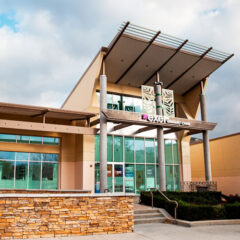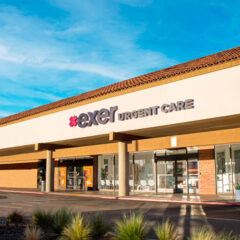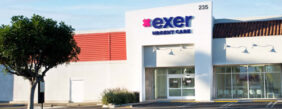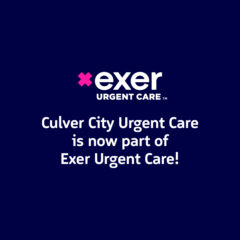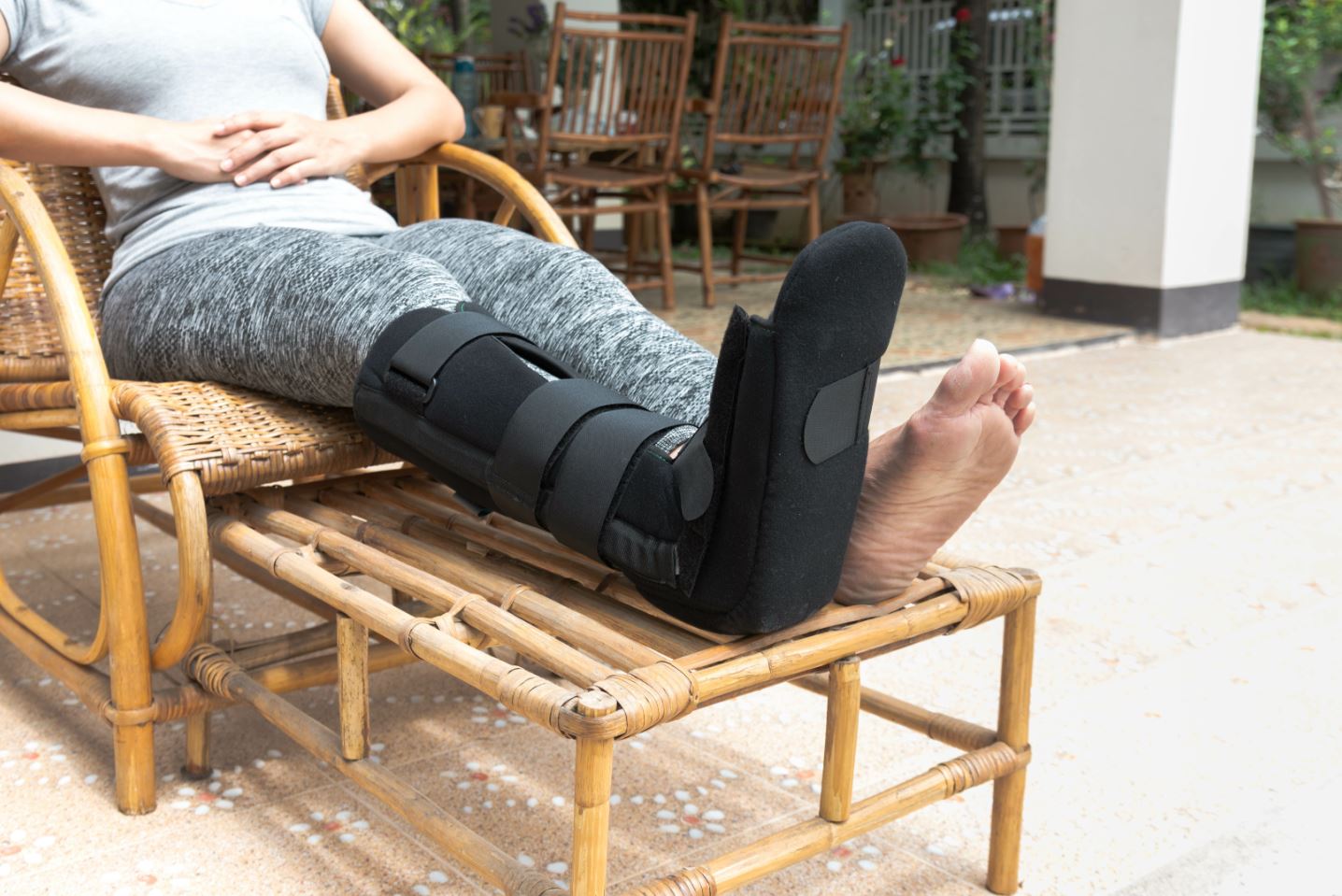Smooth skin is often considered a symbol of beauty and health. With that said, skin tags and warts can be common skin conditions that can be unsightly, cause irritation, or affect a person’s self-confidence and overall appearance.
Fortunately, at Exer Urgent Care clinics, there are various quick and effective solutions available for removing these unsightly growths. This guide aims to provide a comprehensive overview of skin tags, warts, and explore the most popular and efficient removal methods available at Exer Urgent Care walk-in clinics.
Understanding Skin Tags
Skin tags, medically known as acrochordons, are small, harmless, and non-cancerous growths that typically appear on the neck, armpits, groin, eyelids, and other areas where skin rubs against skin or clothing. They are composed of collagen fibers and blood vessels, often appearing as fleshy or pigmented protrusions. Although the exact cause of skin tags is unknown, certain factors such as hormonal changes, obesity, and genetics may contribute to their development.
Understanding Warts
Warts, on the other hand, are caused by the human papillomavirus (HPV) and can manifest in various forms. Common warts usually appear on the hands and fingers and have a rough, grainy texture. Plantar warts develop on the soles of the feet, often causing discomfort while walking. Flat warts are small, smooth growths that typically appear in large numbers on the face, arms, or legs. Genital warts are sexually transmitted and can occur on the genitals or around the anus. It’s important to note that self-diagnosis of warts is not always accurate, and consulting a healthcare professional is recommended for an accurate diagnosis.
Wart and Skin Tag Removal Procedures
Excision
Excision is a common medical procedure used for the removal of skin tags and warts. Skin tags and warts are benign growths that can appear on various parts of the body and may cause discomfort or cosmetic concerns. Excision involves the surgical removal of these growths using specialized instruments.
The Excision Procedure
Excision is a relatively straightforward surgical procedure that is commonly performed at Exer Urgent Care centers to remove most skin tags and warts. The procedure to treat skin tags and warts involves the following steps:
- Anesthesia: Prior to the excision, the area around the multiple skin tags or wart is typically numbed with a local anesthetic. This ensures that the patient remains comfortable throughout the skin tag remover procedure.
- Incision: Once the area is numb, the surgeon uses a scalpel or surgical scissors to make a small incision around the base of the skin tag or wart. Care is taken to ensure that the incision is made at a safe distance from the healthy surrounding skin.
- Removal: After making the incision, the surgeon carefully lifts and removes the skin tag or wart from the underlying tissue. In the case of larger growths or deeper-rooted warts, the surgeon may also remove a portion of the surrounding tissue to ensure complete removal.
- Closure: Once the skin tags are treated or the wart has been excised, the surgeon may use sutures or adhesive strips to close the incision. This step depends on the size and location of the excised skin growth, skin folds, or skin lesions.
Benefits of Excision
Excision offers several benefits as a treatment option for skin tags and warts:
- Complete Removal: Excision ensures the complete removal of the skin tag or wart, minimizing the chances of recurrence.
- Immediate Results: Unlike some other treatment methods that may require multiple sessions, excision provides immediate results, with the growth being removed during the procedure.
- Minimal Scarring: With careful technique and proper wound care, excision can result in minimal scarring, especially for smaller growths.
Cauterization
Cauterization is a medical procedure commonly used for the removal of skin tags and warts. This involves the application of controlled heat or chemicals to destroy the growth, leading to its removal.
The Cauterization Process
Cauterization involves the controlled application of heat or chemicals to remove skin tags and warts. The procedure typically follows these steps:
- Anesthesia: Before cauterization, the area surrounding the growth is usually numbed using a local anesthetic. This ensures patient comfort during the procedure.
- Preparation: The skin tag or wart is thoroughly cleaned and prepared for the cauterization process. This includes disinfecting the area to minimize the risk of infection.
- Heat Cauterization: In heat cauterization, a specialized tool, such as a heated wire or a high-frequency electrical device, is used to apply heat to the growth. The heat effectively destroys the tissue, leading to the removal of the skin tag or wart.
- Chemical Cauterization: Chemical cauterization involves the application of a specific chemical agent, such as trichloroacetic acid (TCA) or silver nitrate, to the skin tag or wart. The chemical destroys the growth by chemically burning or dehydrating the tissue.
- Post-treatment Care: After the cauterization procedure, the area is usually cleaned, and a dressing or ointment may be applied to promote healing. The healthcare professional will provide instructions on post-treatment care, including wound care and any necessary follow-up appointments.
Benefits of Cauterization
Cauterization offers several benefits as a treatment option for skin tags and warts:
- Precision and Effectiveness: Cauterization allows for precise targeting of the growth, ensuring the destruction of the tissue and its subsequent removal.
- Immediate Results: Cauterization provides immediate results, with the skin tag or wart being eliminated during the procedure itself.
- Versatility: Cauterization can be used to remove various types of skin tags and warts, making it a versatile treatment option.
Cryosurgery
Cryosurgery, also known as cryotherapy, is a proven medical procedure used for the removal of skin tags and warts. This involves the use of extreme cold temperatures to freeze and destroy the growth, leading to its removal.
The Cryosurgery Process
Cryosurgery involves the application of extreme cold temperatures to freeze and destroy the tissue of the skin tag or wart. The procedure typically follows these steps:
- Preparation: The area around the skin tag or wart is cleansed and prepared for the cryosurgery procedure. This includes disinfecting the area to minimize the risk of infection.
- Application of Cryogen: A cryogen, such as liquid nitrogen, is applied to the skin tag or wart using a specialized device, such as a cryosurgical probe or a cryo-applicator. The extremely cold temperature causes the cells within the growth to freeze.
- Thawing and Repeat Freezing: After freezing the growth, the cryogen is allowed to thaw, and the process may be repeated for a few seconds or minutes. This freeze-thaw cycle helps to ensure the complete destruction of the tissue.
- Post-treatment Care: After cryosurgery, the treated area is typically cleaned, and a dressing may be applied. The healthcare professional will provide instructions on post-treatment care, including wound care and any necessary follow-up appointments.
Benefits of Cryosurgery
Cryosurgery offers several benefits as a treatment option for skin tags and warts:
- Non-Invasive: Cryosurgery is a non-invasive procedure that does not require any incisions or sutures. It is generally well-tolerated and causes minimal discomfort.
- High Success Rate: Cryosurgery has a high success rate for the removal of skin tags and warts. It effectively destroys the tissue, leading to the elimination of the growth.
- Versatility: Cryosurgery can be used to treat various types of skin tags and warts, making it a versatile treatment option.
- Minimal Scarring: With proper technique and wound care, cryosurgery typically results in minimal scarring. Any residual pigmentation changes or scarring usually fades over time.
Ligation
Ligation is a medical procedure commonly used for the removal of skin tags and warts. This involves the use of a small ligature or thread to cut off the blood supply to the growth, leading to its eventual removal.
The Ligation Process
The litigation procedure involves using a ligature or thread to tie off the base of the skin tag or wart, cutting off its blood supply. The procedure typically follows these steps:
- Preparation: The treatment area is cleaned and prepared for the ligation procedure. This involves disinfecting the area to reduce the risk of infection.
- Application of Ligature: A small ligature or thread, such as surgical suture or dental floss, is carefully tied around the base of the skin tag or wart. The ligature is tightened snugly to obstruct the blood vessels supplying the growth.
- Blood Supply Cut-off: The ligature remains in place, effectively cutting off the blood supply to the skin tag or wart. Without a blood supply, the growth will gradually shrink and eventually fall off.
- Post-treatment Care: After ligation, the treated area is usually cleansed, and a dressing may be applied. The healthcare professional will provide instructions on post-treatment care, including wound care and any necessary follow-up appointments.
Benefits of Ligation
Ligation offers several benefits as a treatment option for skin tags and warts:
- Non-Invasive: Ligation is a non-invasive procedure that does not require incisions or anesthesia. It’s generally well-tolerated and causes minimal discomfort.
- Simplicity and Effectiveness: Ligation is a simple yet effective method for the removal of skin tags and warts. By cutting off the blood supply, the growth is deprived of nutrients and oxygen, leading to its eventual disappearance.
- Versatility: Ligation can be used to treat various types of skin tags and warts, making it a versatile treatment option.
- Minimal Scarring: With proper technique and wound care, ligation typically results in minimal scarring. Any residual pigmentation changes or scarring usually fades over time.
Wart Removal: Beyond Aesthetics
From a medical point of view, wart removal is often recommended for several reasons:
Elimination of Symptoms
Warts can cause discomfort, pain, and itching, especially when they appear in areas where they are frequently irritated or subjected to pressure, such as the hands, feet, or genitals. Removing the wart can alleviate these symptoms, improving the patient’s quality of life.
Prevention of Spreading
Warts are caused by the human papillomavirus (HPV), which is highly contagious. They can spread to other parts of the body or to other people through direct contact. Removing the wart reduces the risk of spreading the infection to oneself or others.
Reduction of Complications
Although warts are generally harmless, they can occasionally lead to complications. For example, plantar warts on the soles of the feet can cause difficulty walking or lead to balance issues. Warts can also become infected, especially if scratched or picked at, resulting in pain, inflammation, and potential secondary infections. Removing the wart lowers the risk of such complications.
Monitoring for Cancerous Growth
While most warts are benign, certain types of HPV can increase the risk of developing certain types of cancers, such as cervical cancer or squamous cell carcinoma (skin cancer). Regular removal and monitoring of suspicious or atypical warts allows for early detection and appropriate management, if necessary.
Is it safe to receive these treatments at a qualified urgent care center?
Yes, it’s safe to receive skin tag and warts removal treatment at a qualified urgent care center, such as Exer Urgent Care. Exer Urgent Care centers are staffed with experienced healthcare professionals who are trained in various medical procedures, including the removal of skin tags and warts. These professionals have the necessary expertise to assess your condition, recommend appropriate treatment options, and perform the removal procedure safely and effectively.
During your visit, the healthcare professional will evaluate your specific case, provide a proper diagnosis, and discuss the available treatment options. They will also explain the procedure, any potential risks or side effects, and answer any questions or concerns you may have.
Post-procedure Sensations: After the removal procedure, there may be mild pain, tenderness, or a stinging sensation at the treated site. These sensations are typically temporary and can be managed with over-the-counter pain relievers or prescribed medications, if necessary.
By choosing a qualified and well-equipped urgent care center, such as Exer Urgent Care, you can have peace of mind knowing that you are receiving treatment from trained professionals in a safe and controlled environment.
Mild Cases may be Treated with Home Remedies or OTC Products
Smooth and blemish-free skin is attainable thanks to the many quick and effective solutions for removing skin tags and warts. Over-the-counter options such as topical creams and freezing products can be helpful for mild cases, while medical procedures like electrosurgery, cryotherapy, and excision are recommended for more stubborn or larger growths.
Home remedies like tea tree oil and apple cider vinegar may offer natural alternatives for those seeking non-invasive methods. As with any non-life-threatening skin condition, it’s best to consult a healthcare professional at Exer Urgent Care for an accurate diagnosis and quick treatment.
Self-Care and Prevention Strategies for Skin Tags and Warts
Good Hygiene: Maintaining proper hygiene can help prevent the spread of warts and skin tags. Regularly wash your hands with soap and water, especially after touching or treating a wart or skin tag.
Avoid Touching or Picking: Refrain from touching, scratching, or picking at warts or skin tags. This can prevent further irritation, spread of the virus (in the case of warts), and potential bleeding or infection.
Keep the Area Clean and Dry: Keep the affected area clean and dry to prevent moisture buildup, which can promote the growth of warts and skin tags.
Protect the Skin: If you have skin tags or warts in areas prone to friction or rubbing, such as the neck or underarms, consider using protective measures like covering them with bandages or wearing clothing that reduces friction.
Avoid Sharing Personal Items: Since warts are contagious, avoid sharing personal items such as towels, razors, or clothing with others to prevent the spread of the virus.
Boost Immune System: A strong immune system can help fight off the HPV virus, which causes warts. Maintain a healthy lifestyle by eating a balanced diet, exercising regularly, getting enough sleep, and managing stress to support your immune system.
Foot Protection: To prevent plantar warts on the feet, wear proper footwear in public places like pools, locker rooms, and communal showers. Avoid walking barefoot in these areas.
Regular Skin Examinations: Visit Exer Urgent Care for periodic skin examinations to check for any new growths, changes in existing warts or skin tags, or signs of infection. Early detection can aid in prompt treatment.
Treatment of Warts: If you notice a wart, consider seeking appropriate medical treatment at an Exer Urgent Care center near you. Prompt removal can help prevent spreading to other areas of the body or to other people.
Choose Exer Urgent Care for Safe and Quick Skin Tag and Wart Removal Solutions
Are skin tags or warts causing you discomfort or affecting your confidence? Don’t wait any longer to seek treatment! Visit your nearest Exer Urgent Care clinic today. Our experienced healthcare professionals are here to provide expert care and safely guide you through the process. Reclaim smooth, skin and regain your confidence. Walk in today and take the first step toward a happier, healthier you!





